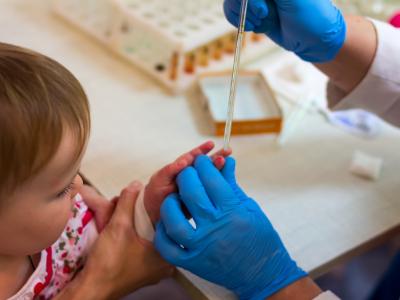Study finds substantial declines in children's outpatient antibiotic use
Data from three large health plans shows a substantial decline in outpatient antibiotic use in children from 2010 through 2014, according to a study today in Pediatrics.
For the study, researchers analyzed pharmacy claims data from three commercial health plans (Plans A, B, and C) in three different regions of the United States, covering children between 3 months and 18 years of age. The same research team has been monitoring the data since 2000, and a previous study had found that the substantial downward trend in antibiotic use among children since 2000 had begun to plateau by 2009-2010. To determine whether antibiotic use has continued to decline or remain stable, the researchers calculated population-based antibiotic-dispensing rates for the three health plans for each study year from 2000 through 2014.
The results showed clear and substantial additional declines in antibiotic use among children in all age groups in the three health plans from 2009-2010 through 2013-2014. Looking at 2000-2001 through 2013-2014, the researchers found overall declines across all three health plans of 40% to 50% among children under the age of 6, who have the highest rates of antibiotic use of any age group. Declines in the range of 20% to 40% were observed in older children and adolescents. Consistent with the findings of the previous studies, antibiotic prescribing rates were markedly lower in Plan B, an integrated delivery health system plan located in the Mountain West.
The results also showed that the fraction of antibiotic prescribing associated with diagnoses of viral illnesses decreased in all age groups, and that use of second-generation macrolides and cephalosporins—neither of which are considered first-line treatment for common pediatric infections—declined from 2009-2010 through 2013-2014, after marked increases the decade before.
Though they acknowledge that a substantial fraction of antibiotic prescribing in all age groups remains unnecessary and that further reductions are possible, the authors of the study conclude, "We believe that child health professionals can be justifiably proud of the major change in practice that has occurred in outpatient prescribing of antibiotics."
Dec 17 Pediatrics study
Study shows C diff spores persist in toilet water and on bathroom surfaces
A new study by researchers from the University of Oklahoma College of Public Health suggests that toilets may be a persistent source of environmental Clostridioides difficile contamination. The findings appear in the American Journal of Infection Control.
In the experimental study, the researchers seeded a flushometer-style toilet in a sealed chamber with a non-pathogenic strain of C difficile spores. The toilet was then flushed 24 times, and the researchers collected post-flush bowl water samples to measure C difficile in the toilet water. They also evaluated large droplets on toilet and bathroom surfaces and air samples to measure environmental contamination and the presence of bacteria in aerosol from the toilet plume.
The researchers captured C difficile spores in all post-flush water samples in all trials, indicating persistent contamination even after 24 flushes. In addition, C difficile spores detected in large droplets on toilet and bathroom surfaces accumulated over the 24-flush period. Droplet nuclei spore bioaerosol was produced over at least 12 flushes.
"These results demonstrate that toilets contaminated with C difficile spores will produce numerous large droplet and droplet nuclei bioaerosols that can contaminate surfaces close to and distant from the source," the authors of the study write. "Further, the microbial contamination will persist in the bowl water for many flushes after initial contamination and produce bioaerosol with each flush."
The authors say the results have significant implications for public access environments where people shedding C difficile, or other gastrointestinal pathogens, may contaminate a toilet that is subsequently used by other people.
Dec 14 Am J Infect Control study












